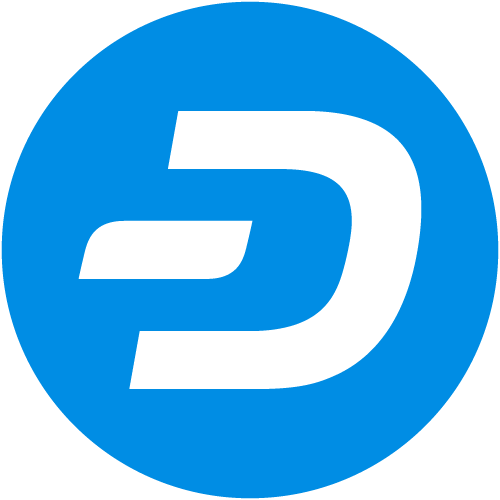
This is sponsored content. Barchart is not endorsing the websites or products set forth below.
The rise of digital currencies like Dash is providing new opportunities to address financial exclusion and promote economic empowerment. In this article, we will explore how Dash is revolutionizing payments by enabling fast, low-cost, and secure transactions for people without access to traditional banking services. Apart from this, if you are struggling with crypto trading, try using the https://immediatefuture.io/ for better outcomes.
How Dash addresses financial exclusion
Digital currencies like Dash are emerging as a potential solution to the problem of financial exclusion. Unlike traditional banking services, Dash is designed to be accessible to anyone with a smartphone or internet connection, regardless of their location or income level.
At the heart of the Dash ecosystem is a decentralized network of nodes, which collectively validate transactions and maintain a secure and transparent ledger of all Dash transactions. This peer-to-peer network enables Dash users to send and receive payments directly, without intermediaries like banks or payment processors.
One of the key advantages of Dash is its ability to enable fast and low-cost transactions. Dash transactions are typically processed within seconds, compared to hours or days for traditional banking transactions. This speed is particularly important for people who rely on remittances from family members working abroad or need to make urgent payments for goods and services.
Another advantage of Dash is its focus on financial privacy and security. Dash uses advanced encryption techniques and a unique mixing process to protect users' transaction data and prevent fraud or theft. This is especially important for people who live in countries with weak financial regulations or high levels of corruption.
Real-world examples of how Dash is making payments more accessible
Dash has already been used in a variety of real-world scenarios to make payments more accessible and convenient for people without access to traditional banking services. Here are some examples:
In Venezuela, where hyperinflation and economic turmoil have made traditional banking services unreliable and expensive, Dash has emerged as a popular alternative for merchants and consumers. Dash is accepted at thousands of merchants across the country, from street vendors to supermarkets, and can be used to buy everything from food and clothing to cell phone top-ups.
In Zimbabwe, where a shortage of US dollars has led to widespread cash shortages and long queues at banks, Dash has been embraced by a growing number of small businesses and individuals. Dash transactions are processed instantly, compared to the hours or days it can take to withdraw cash from a bank or ATM.
In the Philippines, where millions of people work overseas and send money back home to their families, Dash is being used to facilitate faster and cheaper remittances. By using Dash, overseas workers can avoid the high fees charged by traditional remittance companies and send money directly to their loved ones' mobile wallets in seconds.
In the United States, where millions of people lack access to traditional banking services due to high fees or poor credit scores, Dash is being used to provide a low-cost and easy-to-use alternative. Dash wallets can be downloaded for free on any smartphone, and transactions are processed quickly and securely.
Challenges and opportunities for Dash in addressing financial exclusion
While Dash has shown great promise in addressing financial exclusion, there are still challenges and opportunities that need to be addressed in order to fully unlock its potential.
One of the main challenges for Dash is regulatory barriers. Many countries have yet to fully embrace digital currencies, and some have even banned their use altogether. This can make it difficult for Dash to gain traction in certain markets and limit its potential impact on financial exclusion.
Another challenge for Dash is the need for greater awareness and adoption among underserved communities. While Dash has made great strides in countries like Venezuela and Zimbabwe, there are still many people who are unaware of its benefits or have yet to try it out for themselves.
At the same time, there are also many opportunities for Dash to expand its reach and impact. One of the biggest opportunities is the growing trend towards digital payments and the decline of traditional banking services.
Another opportunity for Dash is to partner with other organizations and initiatives that are working to address financial exclusion. By collaborating with governments, NGOs, and other stakeholders, Dash can leverage their resources and expertise to reach more people and create more impact.
Conclusion
In conclusion, Dash is proving to be a powerful tool in the fight against financial exclusion. By providing a fast, low-cost, and secure way to make payments, Dash is helping to unlock economic opportunities for people who have been left behind by traditional banking services. Real-world examples in countries like Venezuela, Zimbabwe, and the Philippines demonstrate the potential impact of Dash on financial inclusion.
On the date of publication, Barchart Reach did not have (either directly or indirectly) positions in any of the securities mentioned in this article. All information and data in this article is solely for informational purposes. For more information please view the Barchart Disclosure Policy here.




/An%20image%20of%20a%20Tesla%20humanoid%20robot%20in%20front%20of%20the%20company%20logo%20Around%20the%20World%20Photos%20via%20Shutterstock.jpg)
/A%20Palantir%20office%20building%20in%20Tokyo_%20Image%20by%20Hiroshi-Mori-Stock%20via%20Shutterstock_.jpg)
/AI%20(artificial%20intelligence)/Data%20Center%20by%20Caureem%20via%20Shutterstock%20(2).jpg)
/Tesla%20Inc%20logo%20by-%20baileystock%20via%20iStock(1).jpg)
/Quantum%20Computing/A%20concept%20image%20of%20a%20green%20and%20yellow%20motherboard_%20Image%20by%20Gorodenkoff%20via%20Shutterstock_.jpg)